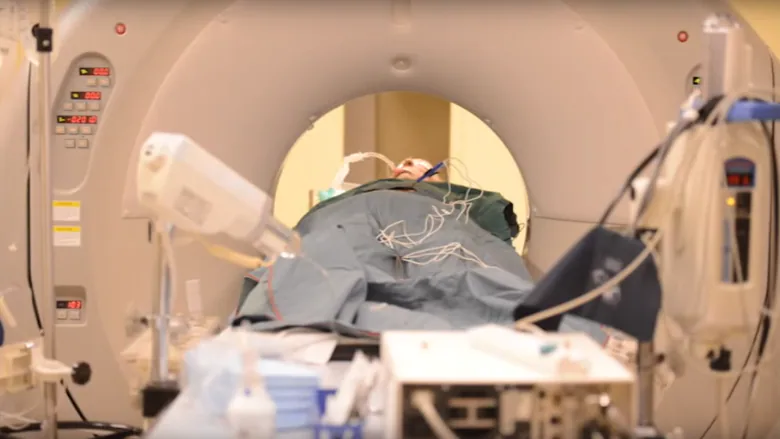Prostate cancer is one of the most common types of cancer, with around one in six men expected to receive a diagnosis over the course of their lifetimes. Typically, patients have to undergo surgical removal of the prostate gland, and in some cases may require radiotherapy after to increase their chances of a cure. Such invasive procedures are painful and terrifying, and can result in permanent damage. For instance, after radical prostatectomy, patients can no longer ejaculate during sex, meaning they are unable to conceive through sexual intercourse.
But a pioneering new treatment could cure prostate cancer without damaging healthy tissue and impairing important functions for the patient’s well-being.

Doctors at the University College London Hospital (UCLH) used the Nanoknife system, manufactured by New York-based AngioDynamics, to perform a minimally invasive, image-guided procedure on six prostate cancer patients in the UK. The procedure takes only one hour and the patients were discharged on the same day, which means hospitals can free up a lot of resources by not having to hospitalize post-surgery patients over multiple nights or maybe even weeks.
“What appealed to me the most was the fact the chance of collateral damage is much reduced. With some of the treatments it seemed a bit like using a sledgehammer to crack a nut – almost literally,” said Neil Gershon, 70, one of the patients who received treatment with Nanoknife on the very first day the UK’s NHS introduced the procedure.
“It was all done in a day which was great. When the general anaesthetic wore off, I felt absolutely fine, no pain at all. It couldn’t have gone better.”
Thin needles were inserted through the skin of the patients, guided by MRI scanning, right next to the site of their tumors. When short electrical pulses are fired through these electrodes, the membranes of the cancer cells begin to disintegrate, effectively destroying the tumor.
“Cells with holes in the wall, they’re a bit like sinking ships,” said Dr. Michael Moser, a surgeon at the University of Saskatchewan, who has worked with this experimental procedure across the pond and has reported great success. “So they start to take on water, they start to lose their own contents. They try to bail and keep up, but eventually they can’t keep up and the cells die.”
Previously, the only other targeted treatments for prostate cancer were cryotherapy and focused ultrasound, which are available only in a few major specialist centers in the South of England. Doctors now hope to see the new technique spread to hospitals across the UK, especially since it doesn’t require as much training as other techniques.
Three years’ worth of data showed that Nanoknife patients had only a 10% rate of retreatment, compared to a rate of 25% at five years for cryotherapy and high-intensity focused ultrasound therapy. Rates of incontinence for the new treatment were just 1%, similar to those of other targeted treatments, with rates of between 10% and 20% for those undergoing traditional surgery. About 9 in 10 men were left with good erectile function.
Because the treatment can be performed with ultra-high precision, the surrounding healthy tissue is spared and patients don’t have to face grueling side effects as they’d typically encounter post-surgery. The procedure is particularly life-saving in cases when tumors grow in difficult places. For instance, pancreatic cancer patient Mobashar Ahmad had his tumor wrapped around a blood vessel and doctors told him they could not remove it entirely. Dr. Michael Moser, a surgeon at the University of Saskatchewa in Canada used Nanoknife on Ahmad’s tumor in 2017.
Besides prostate and pancreatic cancer, Nanoknife could be potentially used on a number of other cancers, including kidney cancers that may otherwise necessitate the removal of kidneys.






